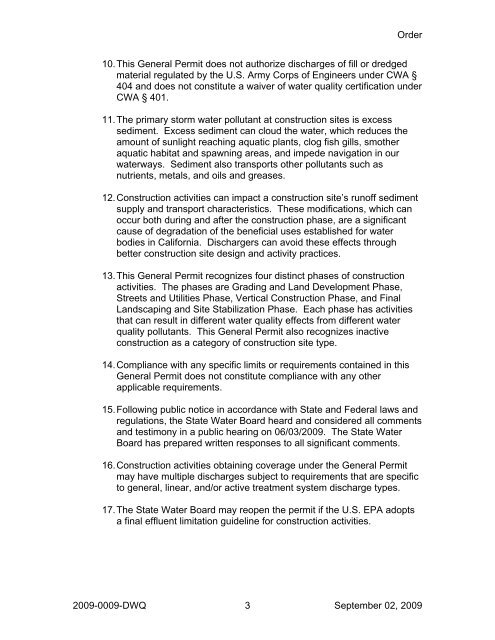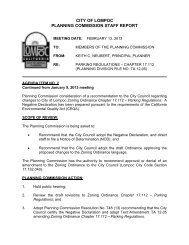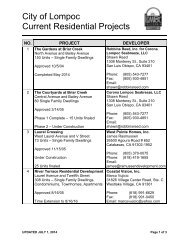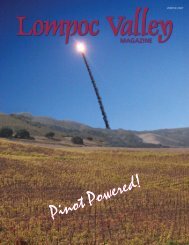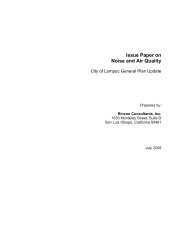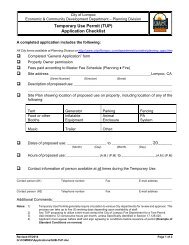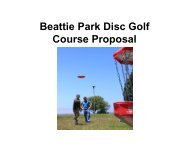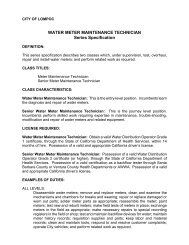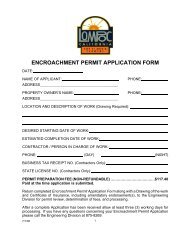Storm Water Pollution Prevention Plan (SWPPP) - the City of Lompoc!
Storm Water Pollution Prevention Plan (SWPPP) - the City of Lompoc!
Storm Water Pollution Prevention Plan (SWPPP) - the City of Lompoc!
You also want an ePaper? Increase the reach of your titles
YUMPU automatically turns print PDFs into web optimized ePapers that Google loves.
Order10. This General Permit does not authorize discharges <strong>of</strong> fill or dredgedmaterial regulated by <strong>the</strong> U.S. Army Corps <strong>of</strong> Engineers under CWA §404 and does not constitute a waiver <strong>of</strong> water quality certification underCWA § 401.11. The primary storm water pollutant at construction sites is excesssediment. Excess sediment can cloud <strong>the</strong> water, which reduces <strong>the</strong>amount <strong>of</strong> sunlight reaching aquatic plants, clog fish gills, smo<strong>the</strong>raquatic habitat and spawning areas, and impede navigation in ourwaterways. Sediment also transports o<strong>the</strong>r pollutants such asnutrients, metals, and oils and greases.12. Construction activities can impact a construction site’s run<strong>of</strong>f sedimentsupply and transport characteristics. These modifications, which canoccur both during and after <strong>the</strong> construction phase, are a significantcause <strong>of</strong> degradation <strong>of</strong> <strong>the</strong> beneficial uses established for waterbodies in California. Dischargers can avoid <strong>the</strong>se effects throughbetter construction site design and activity practices.13. This General Permit recognizes four distinct phases <strong>of</strong> constructionactivities. The phases are Grading and Land Development Phase,Streets and Utilities Phase, Vertical Construction Phase, and FinalLandscaping and Site Stabilization Phase. Each phase has activitiesthat can result in different water quality effects from different waterquality pollutants. This General Permit also recognizes inactiveconstruction as a category <strong>of</strong> construction site type.14. Compliance with any specific limits or requirements contained in thisGeneral Permit does not constitute compliance with any o<strong>the</strong>rapplicable requirements.15. Following public notice in accordance with State and Federal laws andregulations, <strong>the</strong> State <strong>Water</strong> Board heard and considered all commentsand testimony in a public hearing on 06/03/2009. The State <strong>Water</strong>Board has prepared written responses to all significant comments.16. Construction activities obtaining coverage under <strong>the</strong> General Permitmay have multiple discharges subject to requirements that are specificto general, linear, and/or active treatment system discharge types.17. The State <strong>Water</strong> Board may reopen <strong>the</strong> permit if <strong>the</strong> U.S. EPA adoptsa final effluent limitation guideline for construction activities.2009-0009-DWQ 3 September 02, 2009


